L’olivier roi
Suivez nos aventures en recevant notre newsletter toutes les semaines, inscrivez-vous en cliquant ici puis renseignez votre nom et email.
Sud de la Catalogne, un terroir qui se prête à 2 cultures majeures: l’amandier et l’olivier que l’on retrouve partout, selon les vents dominants et les altitudes. Marc Farre nous a fait découvrir le travail autour de ces cultures. Pendant 3 jours, il nous montré comment tailler et soigner ces arbres. Avec lui, nous avons arpentés ses champs mais aussi les champs cultivés en conventionnels pour notre bonne compréhension. Nous avons tenté de travailler pour lui mais sa maîtrise des gestes, son savoir-faire et ses connaissances nous ont vite donné le rôle de spectateurs passionnés. Nous relayons ici une toute partie de son savoir.
80 % des surfaces de Bovera sont consacrées à l’olivier.
Majoritaire, racines en éventail et relativement superficielles il prend tranquillement la place de l’amandier en perte de vitesse (concurrence de l’amande américaine, riche en pesticides et pas chère), racine pivotante de 3m de profondeur capable de traverser les couches de pierres de calcaire compact. Le terroir que nous avons arpenté pendant une semaine est constitué de terrasses établies au fil des siècles, manuellement.

Les terrasses sont entretenues en été lorsque les travaux arboricoles sont en veille. Le calcaire étant friable et les terrains sujets aux lessivages de pluies diluviennes, même rares, certains tronçons s’effondrent.
Quand la terre devient rare et que les bulldozers n’ont pas, ces dernières années, réussi à tailler de nouvelles terrasses, les micros-vallons sont entrecoupés de zones de garrigues naturelles riches de flores et faunes (pinus, romarin, arbousiers, genévriers lavandes, une respiration dans un univers de monoculture qui garanti encore la présence d’insectes – certains agriculteurs remettent des ruches , vers des points d’eaux naturels ou creusés historiquement dans la roche pour concentrer l’eau des pluies.
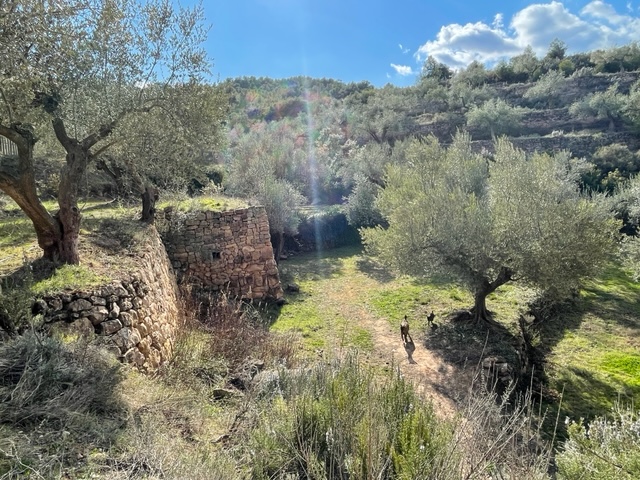
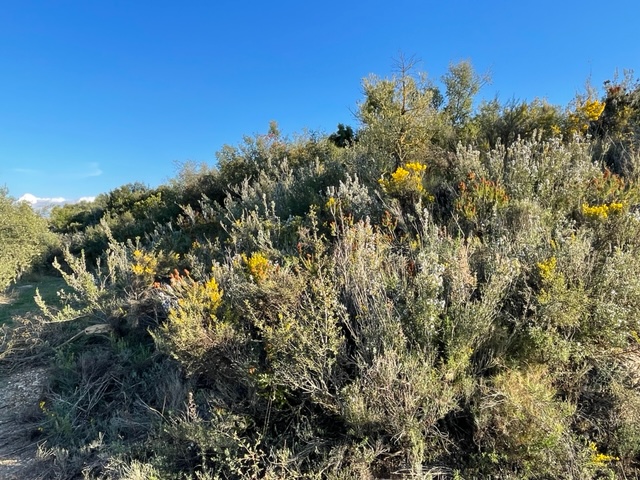
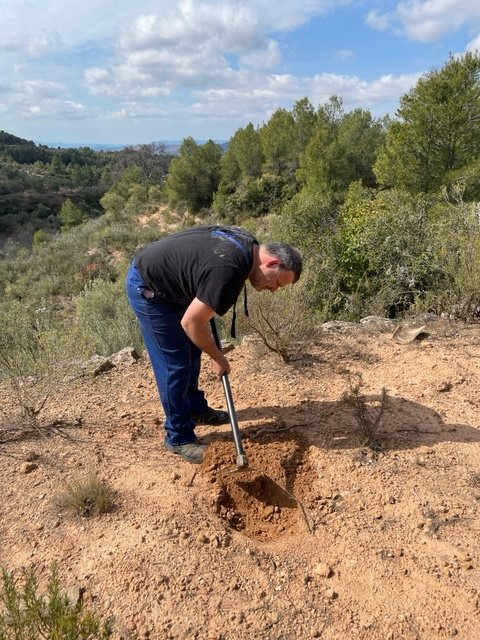
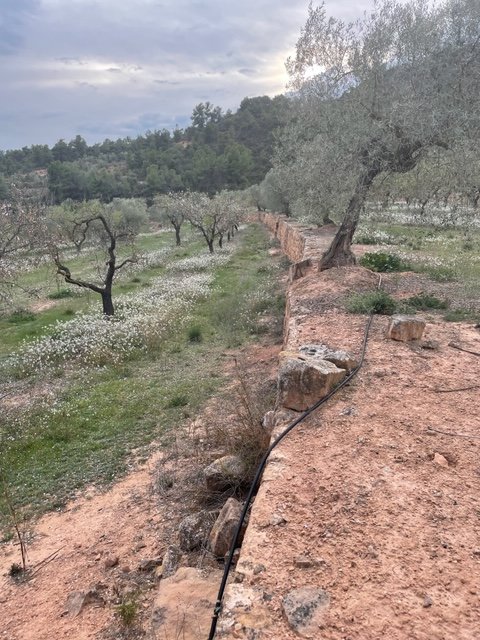
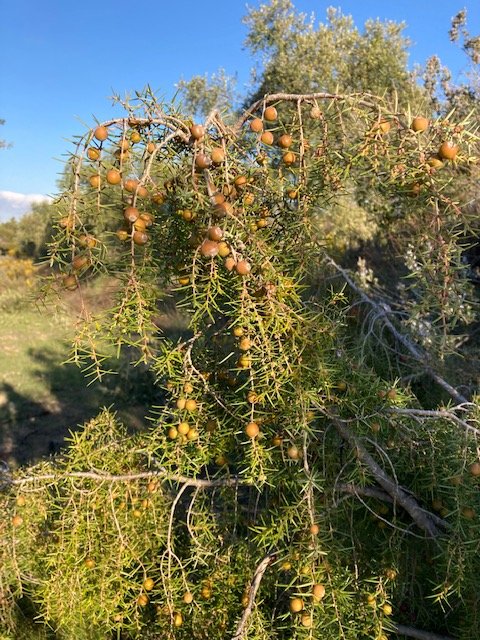
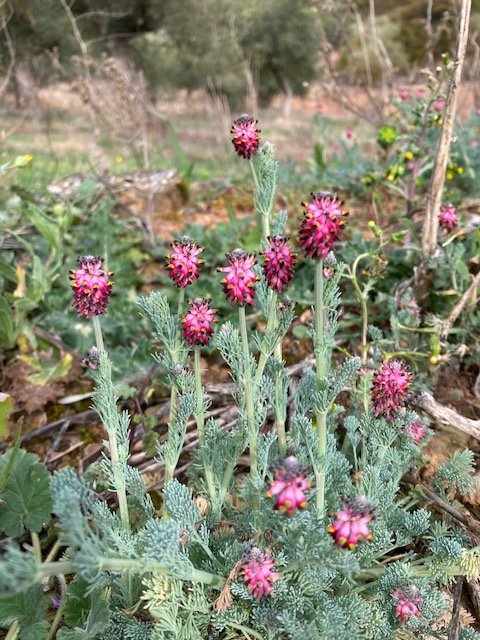
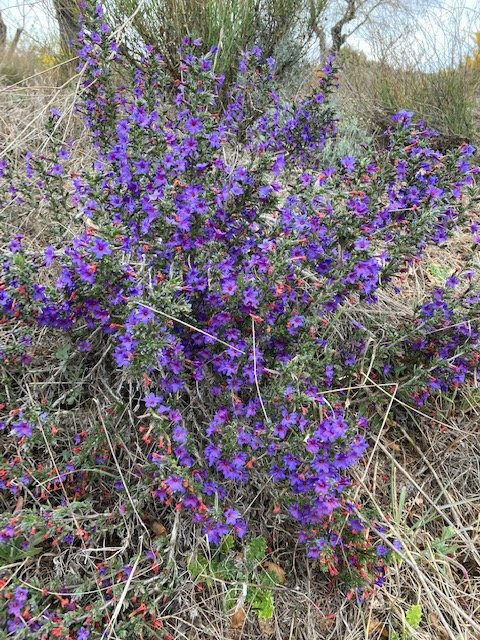
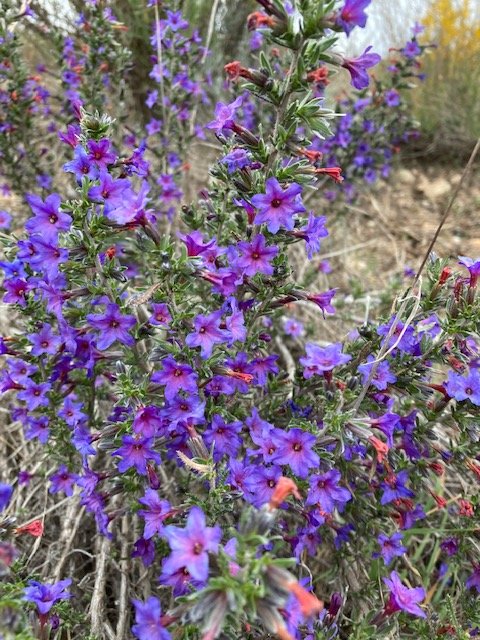
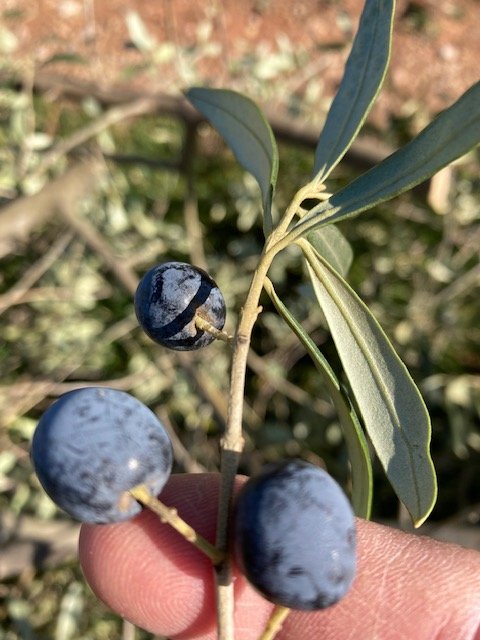

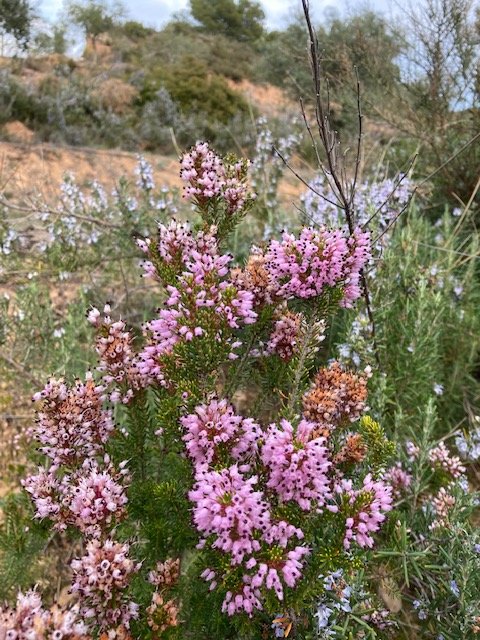


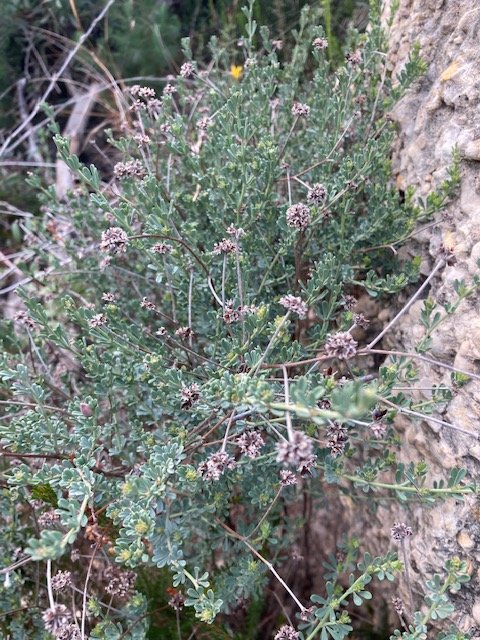
Quel avenir pour les cultures d’oliviers dont tous les types sont présents à Bovera?
Quelques seniors millénaires trônent au milieu des cultures récentes, lesquelles présentent plusieurs types de plantations.
- en 8m x 8m pour les très vieux sujets
- en 6m x 6m ou 4m X 5m qui semble la meilleure implémentation pour travailler des arbres avec un minimum de mécanisation sans blesser les troncs par le secouage lors des récoltes et les branches
- en rangées de plantation serrée tous les mètres, 1,5m ou 2m, mais le résultat semble catastrophique et destiné à être abandonné à terme dans cette région – à contrario d’Evora au Portugal ou nous avons vu des centaines d’hectares plantés ces dernières années sur ce mode de culture de type vignoble- la récolte s’effectue avec les mêmes tracteurs enjambeurs
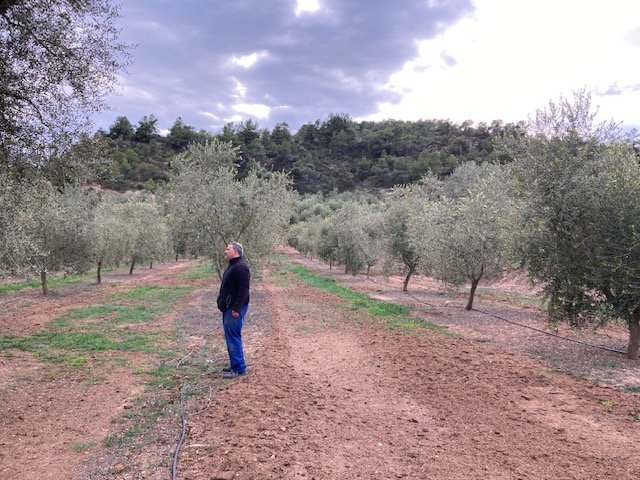
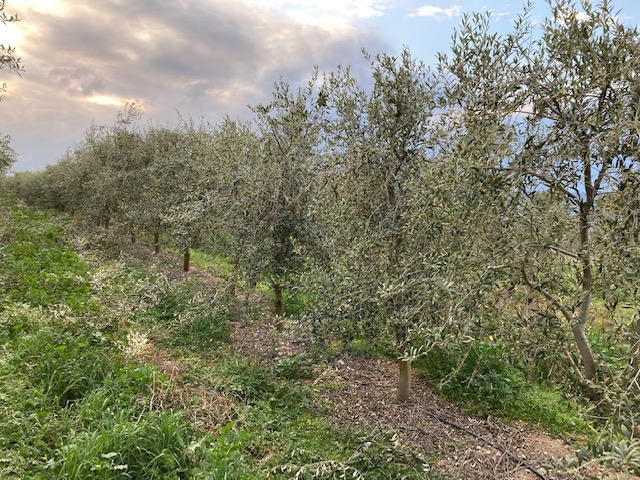
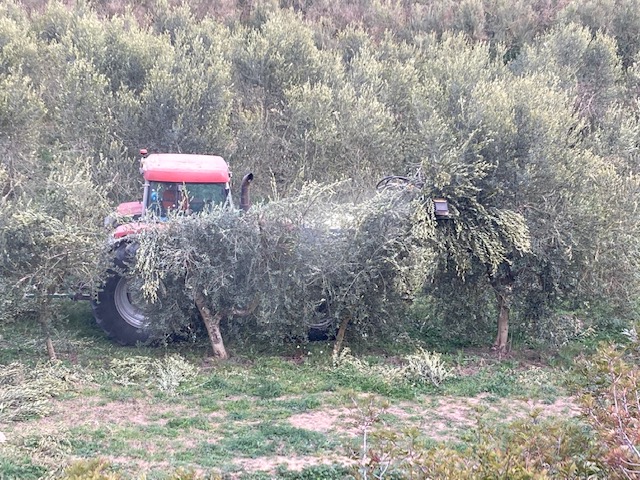
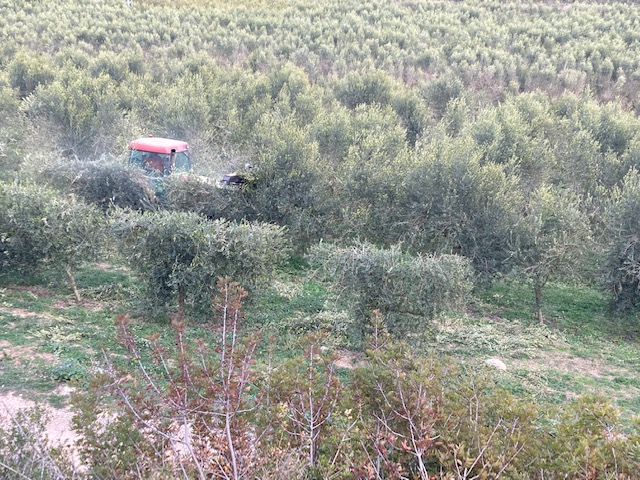
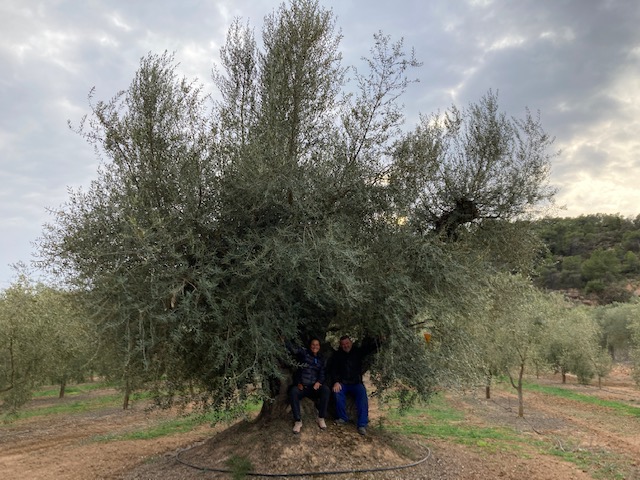
Une taille douce sur plusieurs années, un équilibrage minimaliste prospectif
Nous avons essayé durant 3 jours de tailler sur les conseils patients et attentionnés de Marc Farre. Marc a repris le domaine de son père, domaine conventionnel, les arbres devaient être »propres » intérieur/extérieur. Marc lui part dans l’écologique, réalise que plus on taille, plus on stimule la plante qui produit du bois et des feuilles. Des feuilles qu’il faut nourrir en eau, engrais, et retailler. Le cercle infernal. Il nous propose sa recette vertueuse: une taille douce d’équilibrage sur plusieurs années, nous en retenons 13 règles, mais nous en avons oublié par mal d’autres:
- Commencer par analyser l’arbre dans son ensemble et se concentrer sur les grosses branches
- Limpiar: éclairer le centre de l’arbre sans que les grosses branches ne soient ensoleillées, supprimer les branches qui poussent vers l’intérieur
- Competencia: supprimer la concurrence entre les branches
- Flexibilida: ce qui est rigide est éliminé
- Nieve: supprimer les branches abîmées par la neige
- Supprimer le bois mort
- Anticiper la pousse d’une branche d’un ou deux ans en supprimant une branche plus âgée
- Supprimer les branches qui seront cassées par le passage du tracteur
- Supprimer les branches de plus d’une mètre de bois sans départ secondaire
- Supprimer les branche trop haute qui finiront pas se casser et son difficile à récolter
- Ne pas supprimer les petites branches déjà courbées qui donneront les fruits dans l’année
- Laisser les petites branches de repoussent qui protègent l’arbre du soleil
- Coupe des grosses branches avec une inclinaison qui assurera le départ de nouvelles poussent en direction de l’extérieur de l’arbre
Ce mode de taille douce nécessite une scie à main, courbée, un escabeau et max 5 minutes par arbre, de temps en temps un coup de tronçonneuse (Motosierra) pour éviter de s’épuiser sur les grosses sections. Le sécateur même performant n’est pas utile – c’est très dense, le bois d’olivier.
Les résidus de coupe sont dressés en andains, un par terrasse. Quand la taille de tout le domaine sera achevée, les branches seront broyées par une broyeuse à fléaux, couplée à la prise de force du tracteur, permettant de »mulcher » avec un un BRF, bois raméal fragmenté, et de faucher la première pousse d’herbes, renforçant le taux de matière organique et faisant passer la couleur de la terre de rose à brun foncé !!Une couleur témoin de l’activité biologique du sol, une couleur qui nous rassure.
La couverture végétale – c’est la vie!!!
Peu d’agriculteurs le comprennent en péninsule ibérique et nous sommes choqués de cette désertification industrielle qui remplace la garrigue sèche originelle. Marc, via son processus cultural, travaille non seulement les arbres, mais surtout la terre, avec un énorme investissement dans différentes techniques qui vont permettre de créer et activer une biologie du sol l’enrichissant par les déjections animales, bactériennes, décompositions fongiques (voir notre brève: Marc, à la recherche d’un écosystème viable) . La couverture végétale, témoignant du niveau de vitalité du sol, est gérée afin d’équilibrer le PH – niveau d’acidité du sol, sa granulométrie, sa capacité à absorber les pluies, éviter les lessivages constatés dans les plaines de Malaga, Séville, Grenade. Sans oublier que la couverture végétale permet au sol de capter l’humidité nocturne en la convertissant en rosée matinale.
Si les arboriculteurs conventionnels se font un point d’honneur à nettoyer le sol, de toute herbe concurrente des arbres, de labourer pour faire pénétrer l’eau des pluies dans un sol limoneux argileux qui devient, par dureté, complètement étanche, le couvert végétal, bien maîtrisé, sans labour, permet d’éviter des passages de tracteurs polluants, consommateurs de diesel et compactant le sol tout en consommant un temps d’agriculteur précieux.
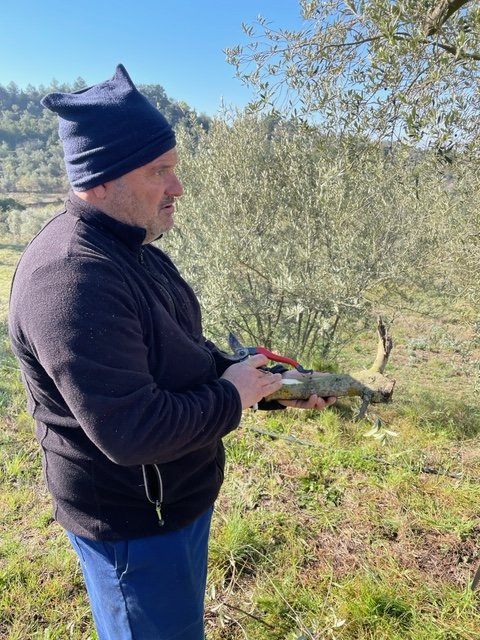
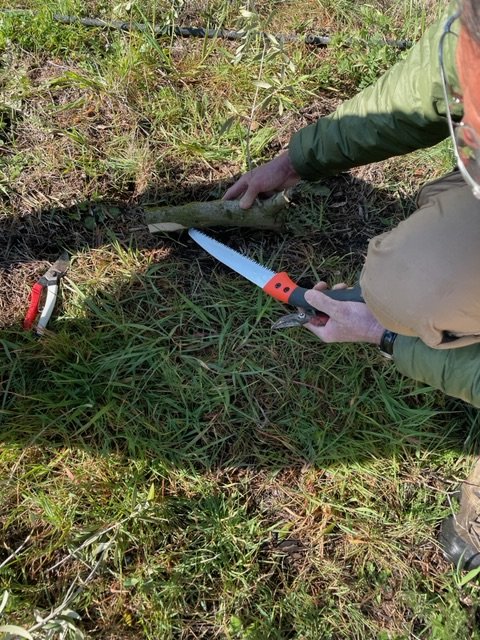
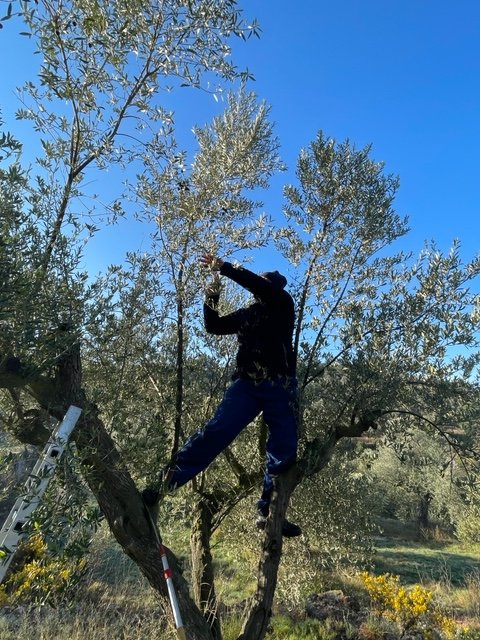
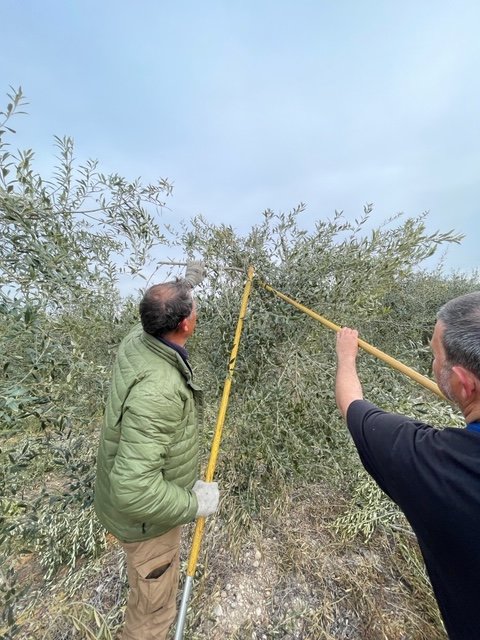
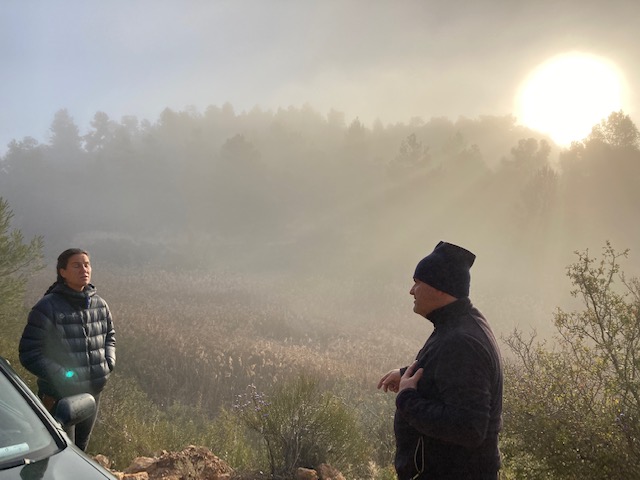
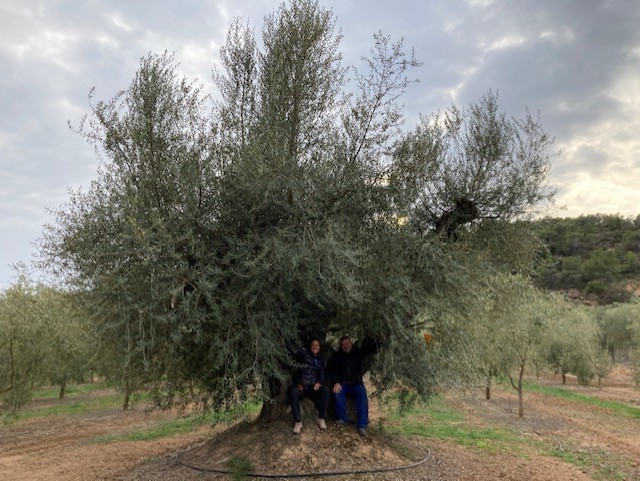
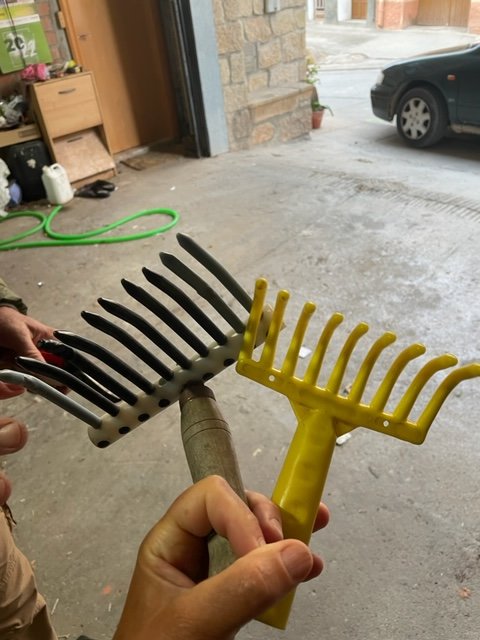

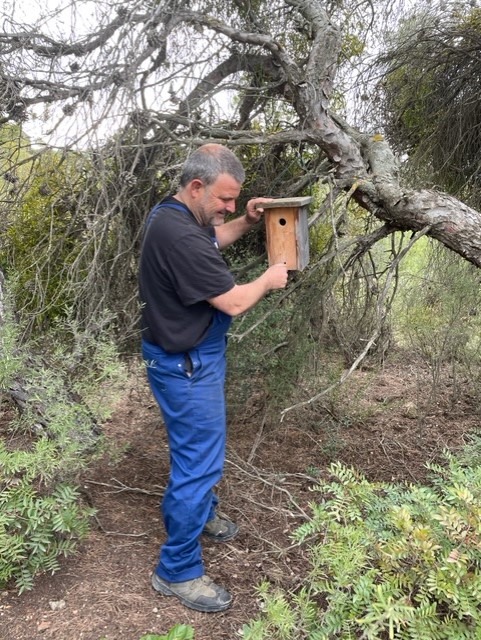
Sur 50 exploitants d’une commune de 3’100 hectares, dont 2’900 hectares cultivés, 6 personnes, soit environ 120 hectares sont résolument tournées vers les productions écologiques, pour des motivations de vision à long-terme de qualité de vie, de qualité de produit, de transmission d’un patrimoine vivant.
Clairement, les productions écologiques nécessitent moins d’eau, moins d’intervention phyto une fois que le sol est constitué (Ce qui demande presque 10 ans), moins d’engrais chimiques (Dont les prix vont décoller étant à base de pétrole), et moins de taille, l’énergie de l’arbre de développant moins vite qu’en culture conventionnelle étant dédiée à la production d’olives.
De l’huile, de différente qualité, de 10 cts à 7 francs le litre, prix brut sortie de l’huilerie
L’huile conventionnelle vaut entre quelques centimes le litre pour celle (non vierge extraite chimiquement des pulpes des presses de l’huile vierge – Evitez d’acheter de l’huile d’olive qui ne soit VIERGE!) , l’huile écologique environ 6-7 francs prix départ usine.
Rapide aperçu du processus d’extraction de l’huile d’olive qui s’effectue sur des rotations de 6 heures pour 8 tonnes , 24h/24h dès octobre, comptez 30l pour de l’huile conventionnelle, 15 litres pour 100kg d’olives en écologique pressé à froid soit max 26 degrés.
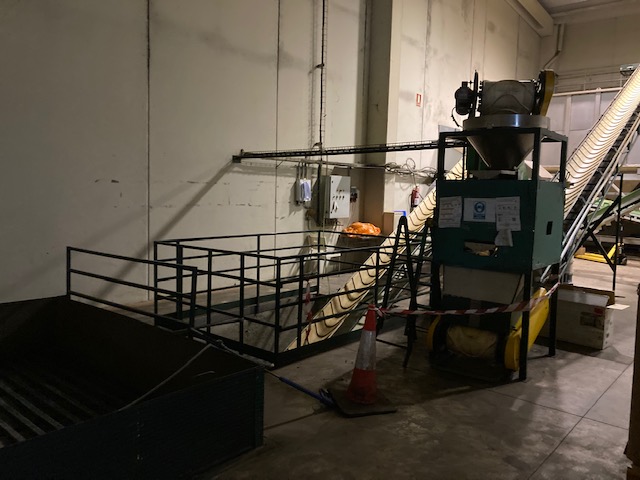
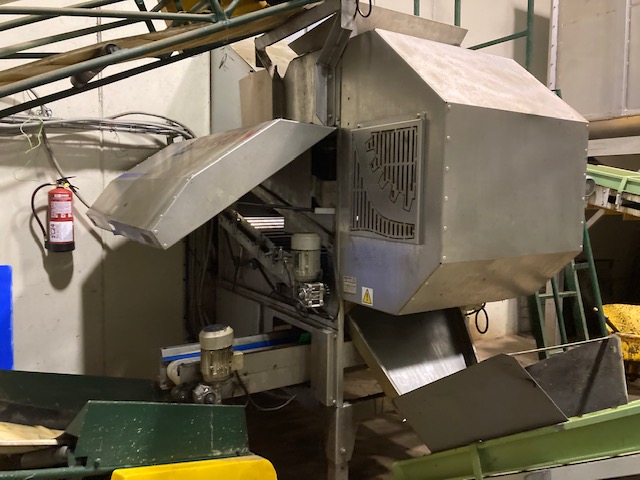
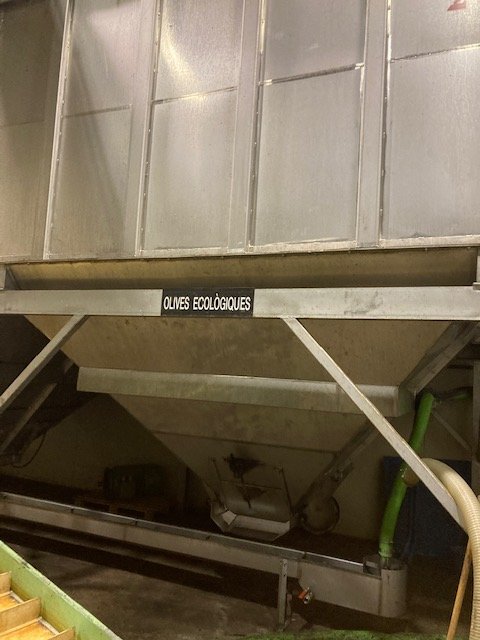
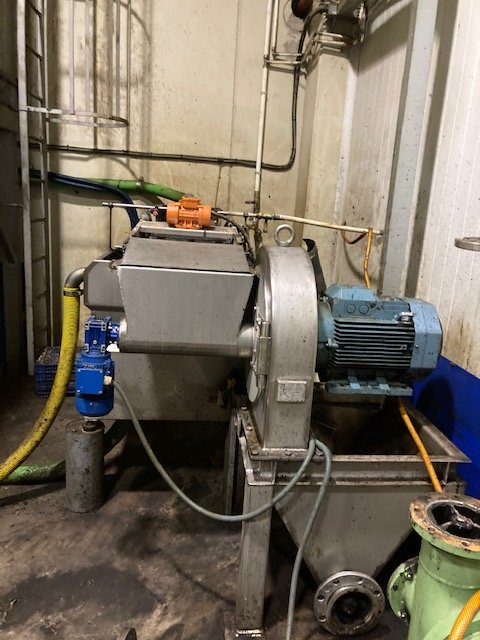
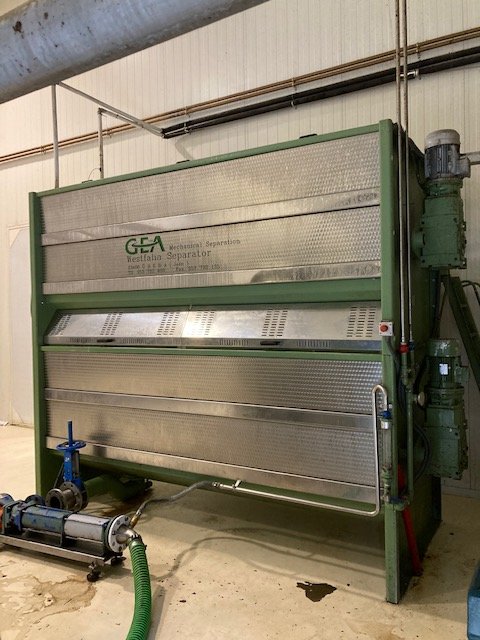
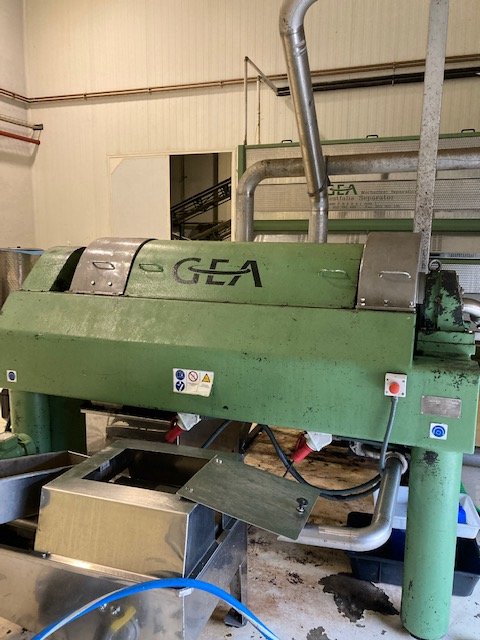
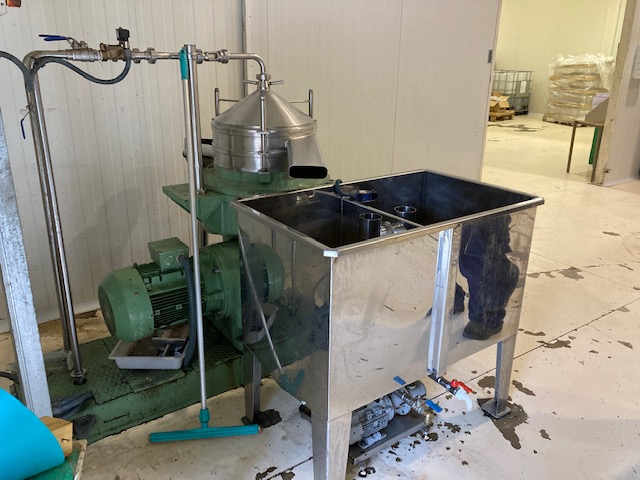
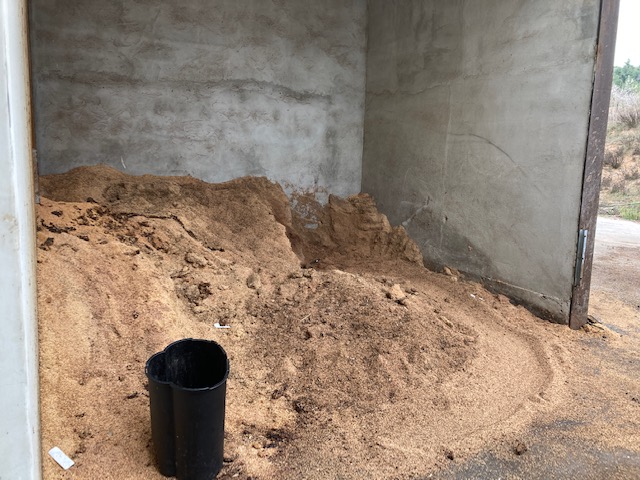

Les amandiers
Un arbre qui résiste bien à la sècheresse jusqu’à un certain point, croissance lente. Historiquement, il était planté au milieu des oliviers, avec une alternance de vigne, oliviers. Mais la bureaucratie et la mécanisation ont eu raison de ces cultures alternées. Désormais l’amandier est seul, il souffre souvent de pucerons qui peuvent sécher un arbre très rapidement. Passé 3 ans de culture biologique, les pucerons ne s’attaquent plus à cette variété, qui devient résistante et n’a plus besoins d’attention sur ce point.
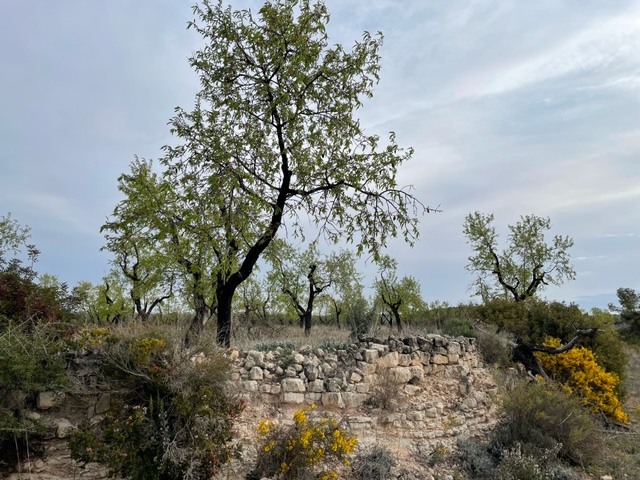

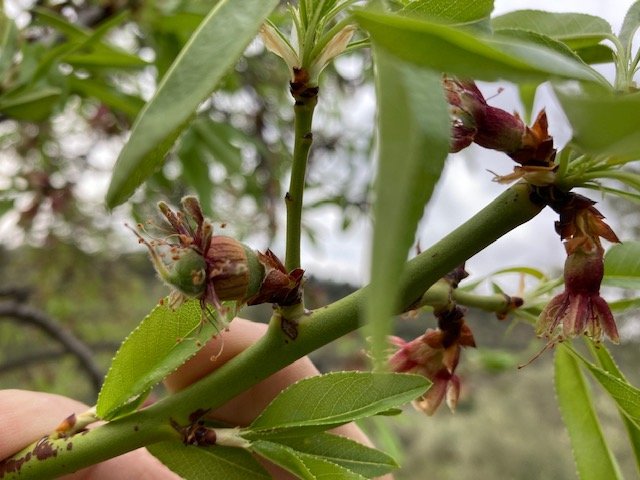
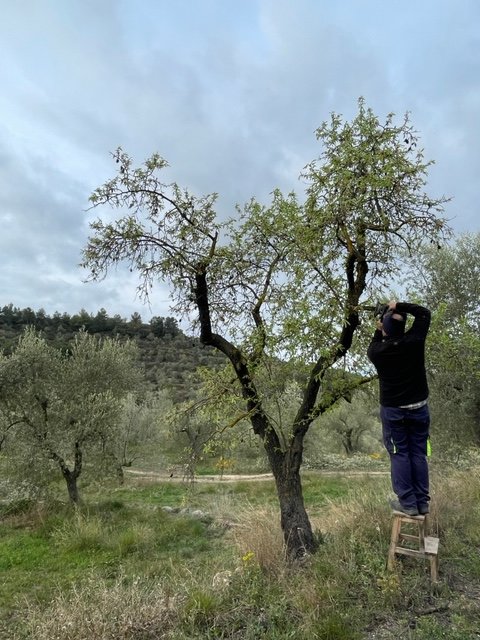
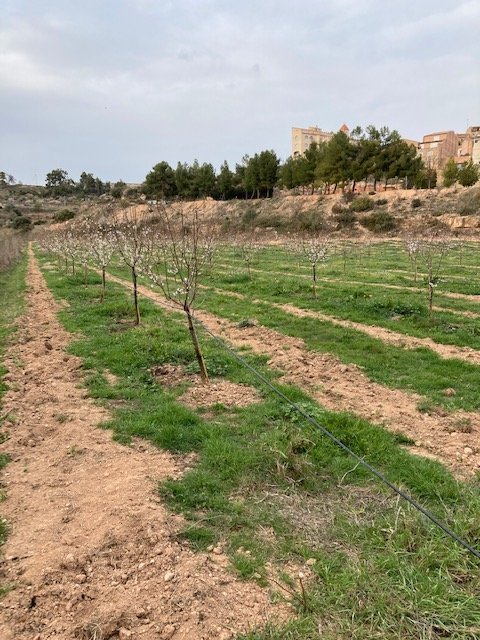
L’amande c’est aussi le fruit chéri de Marc, un fruit qui même s’il n’est pas ramassé dans l’année se conserve plusieurs année. Son grand-père n’attendait pas d’en compter trois au sol pour les ramasser. Depuis nous grapillons sur le bord des routes, les fruits des amandiers sauvages , fruits de l’année 2021.
Un fruit magique qui satisfait:
- les hommes (l’amande)
- le bétail, friand de la première écorce
- l’élevage (les résidus de coques constituent une litière de premier choix)
- un amendement (sans jeux de mot) de long terme pour restituer à la terre ce que l’on lui a pris via la consommation de l’amande
Si l’olivier devient malade? Quid? Cultures de substitution, quelques exemples:
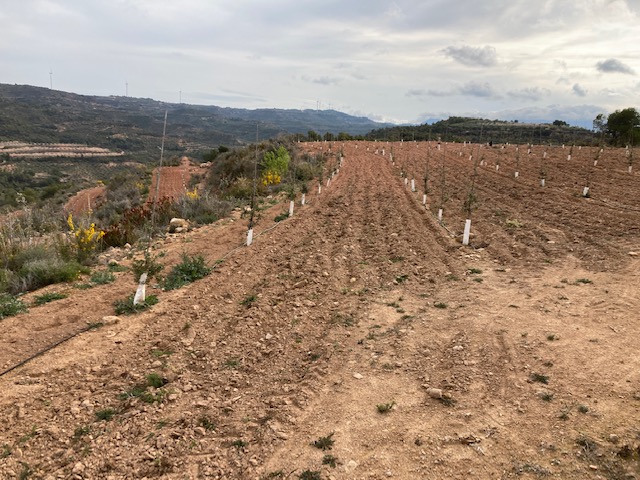
Marc nous présente un exemple d’un agriculture voisin non bio. Sur un versant Nord, le chêne truffier, curieusement en culture conventionnelle, avec engrais, herbicides et labourage ????
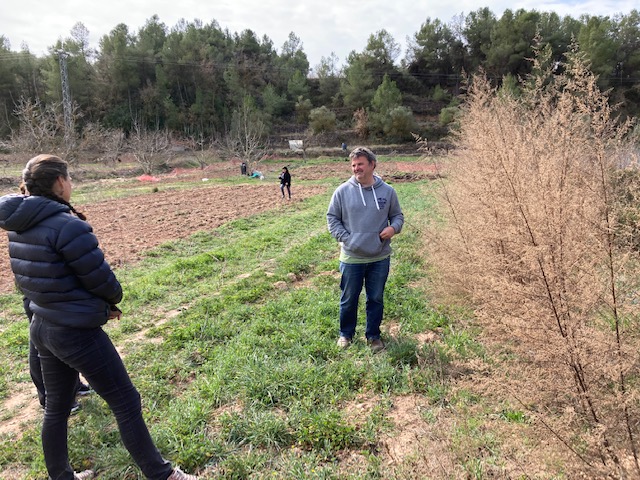
Marc, curieux teste depuis plusieurs années la culture du safran. Il aime cette culture qui permet à toute la famille de participer. La partie en herbe cache la culture de safran au repos, culture fragile, sur 5 ans, un essais réjouissant, mais nécessitant une main d’oeuvre importante (familliale).

Trésor de plusieurs années de récoltes: le safran.
Les étamines séchées du crocus sativus sont dissociées manuellement des pétales. Comptez 500 fleurs pour obtenir 15 grammes du précieux condiment, nous avons goûté, c’est prodigieux!!
Plus la couleur est soutenue, plus la saveur est prononcée!
Pourquoi ne pas réinsérer des animaux en semi-liberté sous les arbres-oliviers, fruitiers? Marc a voulu nous présenter la plus belle basse cour de Bovera, celle de ces amis, Monsieur et Madame Pinto. C’est certainement la belle d’Espagne que nous ayons vue, en plein air; canards de barbarie volants, oie, cochons noirs vietnamiens, pintades, dindons, poules coqs, chèvres et chiens portugais, les gros ceux qui font plus de 80 kilos pour garder le tout!
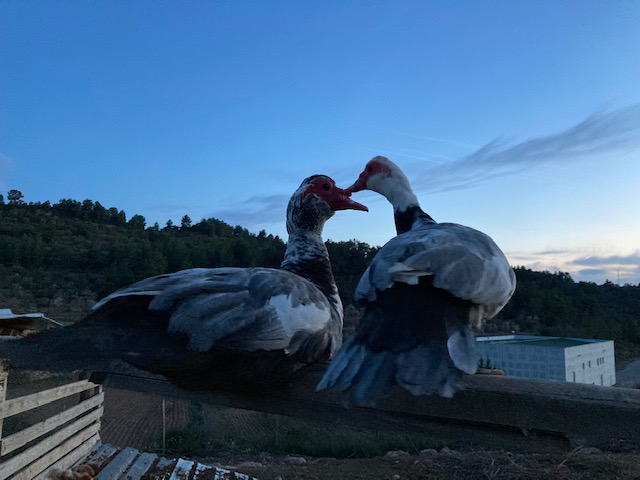
Les canards de Pinto et sa compagnes, artistes portugais adeptes des basse cours en liberté.
A gauche la célébrité « superman » qui nous suit dans nos débats depuis son perchoir situé à 2 mètres du sol, l’animal doit bien peser 7-8 kg, un décollage type MI-24 impressionnant.
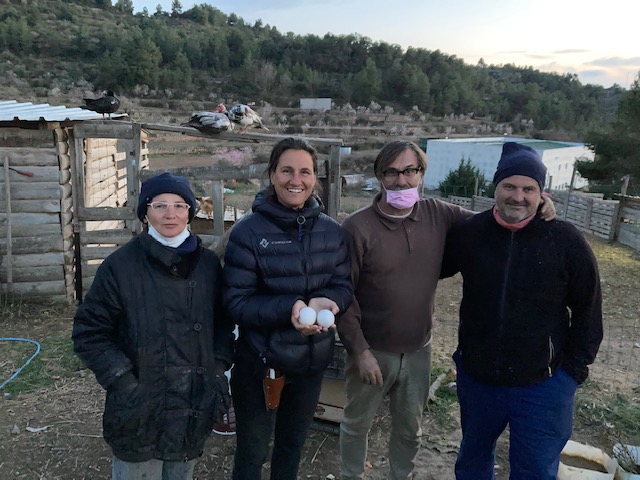
Merci Monsieur et Madame, Pinto, pour votre accueil sympathique et ces magnifiques œufs d’oies fraîchement pondus!
Et un immense merci à Marc pour pour cette incroyable transmission passionnée!
Une réponse